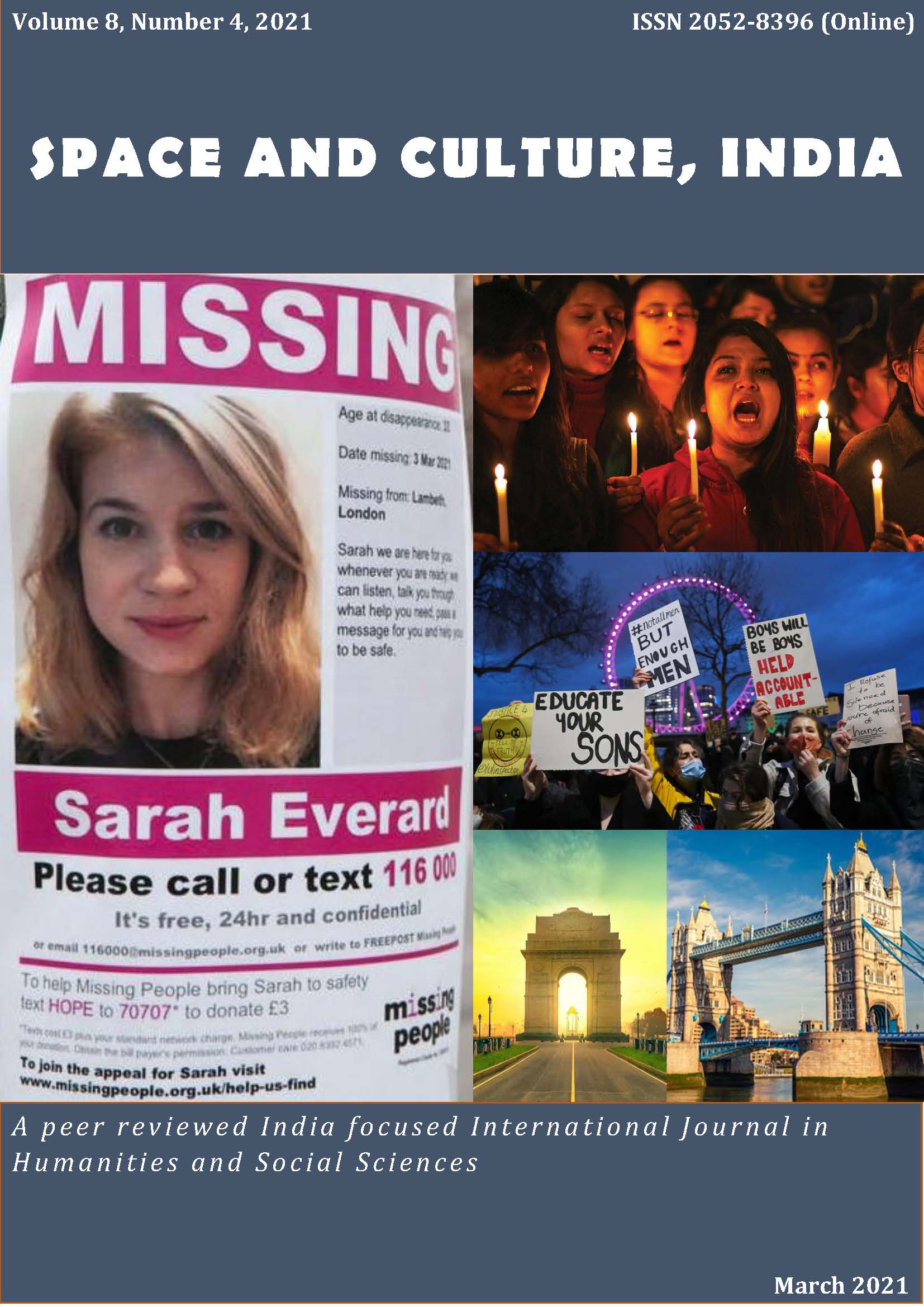Interpretation of Symbols, Veneration and Divine Attributes in Dieng Temple Complex, Central Java

Abstract
This study aims to discuss the divine symbols and attributes used as a medium of worship in the Dieng Plateau. The research was phased in according to Wallace's empirical cycle and was conducted in the Dieng Plateau, Central Java, Indonesia, a spiritual centre in ancient Java. The discovery of the Śiva Triśirah statue in the Dieng Temple Complex reveals new things in the past Hindu Nusantara Theology construction. Several divine symbols and attributes are served as a medium of worship at the Temple Complex in the Dieng Plateau. The concept of Deity in the Dieng Plateau is Śivaistic in character with the worship of Lord Śiva Triśirah, that is, Śiva with three faces and four hands, as the Supreme Deity. However, some divine symbols and attributes also serve as a medium of worship and connected to divinity. In Hinduism, the sacred symbols and attributes of God are inseparable. Divine attributes generally define God. In the discussion of theology, God is described with various excellent attributes. The central divine attributes found are as follows: Omnipotence, Creatorship, Omniscience, Eternity and Omnipresence, Personhood, Goodness⁄ Perfection, Non-Physicality, Necessary, Existence, Simplicity, Immutability, and Impassibility. These divine attributes are depicted in various forms of sacred symbols found in the Dieng Plateau.
Keywords
Dieng, Theology, Śiva Triśirah, Symbols, Divine Attributes, Central Java
References
- Aiyar, I. S. (1997). Durgā Mahiṣāsuramardhinī A Dynamic Myth of Goddess. Gyan Publishing House.
- Asianto, D. R. (2015). Karakteristik Arca Pada Kompleks Percandian Dieng. Universitas Gadjah Mada.
- Barrett, J. L. (1998). Cognitive Constraints on Hindu Concepts of the Divine. Journal for the Scientific Study of Religion. https://doi.org/10.2307/1388144 DOI: https://doi.org/10.2307/1388144
- Chapman, W. (2013). A heritage of ruins: The ancient sites of Southeast Asia and their conservation. In A Heritage of Ruins: The Ancient Sites of Southeast Asia and their Conservation. https://doi.org/10.5860/choice.51-3918 DOI: https://doi.org/10.5860/CHOICE.51-3918
- Donder, I. K., Putu Andre Suhardiana, I., & Ketut Sudarsana, I. (2020). Epistemological Framework of Hindu Theology: A Study in Vedic Hermeneutic Perspective. Journal of Critical Reviews, 7(13), 311–319. https://doi.org/10.31838/jcr.07.13.53 DOI: https://doi.org/10.31838/jcr.07.13.53
- Everitt, N. (2010). The Divine Attributes. Philosophy Compass. https://doi.org/10.1111/j.1747-9991.2009.00264.x DOI: https://doi.org/10.1111/j.1747-9991.2009.00264.x
- Harriyadi, H. (2020). Pertimbangan Pemilihan Lokasi Kompleks Candi Dieng. AMERTA. https://doi.org/10.24832/amt.v37i2.123-138 DOI: https://doi.org/10.24832/amt.v37i2.123-138
- Holmes, S. R. (2009). The Attributes of God. In The Oxford Handbook of Systematic Theology. https://doi.org/10.1093/oxfordhb/9780199245765.003.0004 DOI: https://doi.org/10.1093/oxfordhb/9780199245765.003.0004
- Kramrisch, S. (1954). The Art of India. The Paidon.
- Kramrisch, S. (1976). The Hindu Temple. Motilal Banarsidass Publishers Private Limited.
- Maulana, R. (2002). Siva Trisirah : Suatu Analisis Ikonografi.
- Munandar, A. A. (2016). Kisah-kisah dan Kepercayaan Rakyat di Seputar Kepurbakalaan. Paradigma, Jurnal Kajian Budaya. https://doi.org/10.17510/paradigma.v2i1.15 DOI: https://doi.org/10.17510/paradigma.v2i1.15
- Poerbatjaraka. (1992). Agastya di Nusantara. Yayasan Obor Indonesia.
- Rao, G. (1914). Elements of Hindu Iconography. The Law Printing House.
- Rao, G. (1968). Elements of Hindu Iconography I, II. Motilal Banarsidass.
- Rosenkrantz, G., & Wierenga, E. R. (1991). The Nature of God: An Inquiry into Divine Attributes. Philosophy and Phenomenological Research. https://doi.org/10.2307/2107902 DOI: https://doi.org/10.2307/2107902
- Sedyawati, E. (1979). Laporan Penelitian Keterangan Ikonografis dari Sumber-Sumber Pustaka Jawa Kuno.
- Sedyawati, E., Santiko, H., Djafar, H., Maulana, R., Wiwin, R., & Ashari, C. (2013). Candi Indonesia : Seri Jawa: Vol. I (1st ed., Issue 1). Direktorat Pelestarian Cagar Budaya dan Permuseuman, Direktorat Jenderal Kebudayaan, Kementerian Pendidikan dan Kebudayaan. https://doi.org/10.1017/CBO9781107415324.004 DOI: https://doi.org/10.1017/CBO9781107415324.004
- Sharma, B. (1976). Iconography of Sadasiva. Abhinav Publication.
- Soekmono, R. (1979). Pengantar Sejarah Kebudayaan Indonesia 1. Kanisius.
- Sukatno, O. (2004). Dieng Poros Dunia. IRCiSoD.
- Sura, I. G. (2002). Agastya Parwa: teks dan terjemahan. Widya Dharma.
- Surpi, N. K. (2019). Teologi Hindu di Kompleks Percandian Dieng Wonosobo Jawa Tengah.
- Surpi, N. K. (2020). Śivagrha (Prambanan Temple) as an Archetype of Hindu Theology in Nusantara (An Endeavor to Discover Hindu Theological Knowledge through Ancient Temple Heritage). Analisa: Journal of Social Science and Religion, 5(01). https://doi.org/10.18784/analisa.v5i1.1024 DOI: https://doi.org/10.18784/analisa.v5i1.1024
- Surpi, N. K., Avalokitesvari, N. N. N., Ardana, I. K., Sukanta, I. K., & Subrata, I. D. M. (2020). The divinity philosophy of vaiṢṆava and its interpretation by the warga bhujangga waisnawa in Bali. International Journal of Advanced Science and Technology.
- Titib, I. M. (2003). Teologi & Simbol-Simbol Dalam Agama Hindu. Paramita.
- Wallace, W. L. (1978). An overview of elements in the scientific process. In J. Bynner & K. M. Stribley (Eds.), Research Design The Logic of Social Inquiry. Routledge.
- Wallace, W. L. (2017). The logic of science in sociology. The Logic of Science in Sociology. https://doi.org/10.4324/9781315132976 DOI: https://doi.org/10.4324/9781315132976
